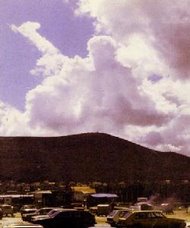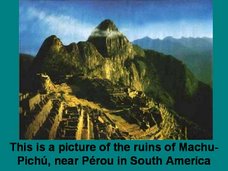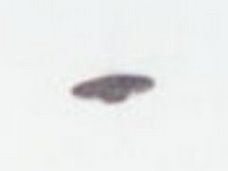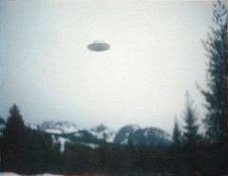On May 31, 1886, a party of tourists had an eerie and foreboding experience while boating across Lake Tarawera, near the foot of Mount Tarawera, a seemingly extinct volcano on New Zealand’s North Island, on their way to the Rotomahana Terraces.
The Rotomahana Terraces were unique silica formations, each more than two hectares in size, which had been built up over countless centuries by silica crystals carried by the water from hot springs that welled up in the area. One pure white, the other coral pink, the Terraces descended the gentle slopes bordering Lake Rotomahana like an irregular flight of giant’s steps.
The tourists were relaxing during their boat ride when a large Maori war canoe, (the Maori’s are the original, native, inhabitants of New Zealand) paddled by a dozen muscular warriors, suddenly came into view some two kilometres away. For several minutes the entire party watched the canoe glide across the placid waters of the lake. Then, in the blink of an eye, while still a kilometre or so away, the canoe vanished. (Two eyewitnesses, Josiah Martin and a Roman Catholic priest, Father Kelleher, made sketches of the canoe and its occupants. A painting of the scene now hangs in the City Art Gallery at Auckland, New Zealand’s capital.)
The tourists’ bewilderment was heightened when they could get no information from their Maori crew about the mysterious canoe. Their half-caste guide Sophia, who spoke fluent English, was evasive. The oarsmen in the two whale-boats carrying the visitors were obviously uneasy. They muttered “Atua” (a spirit) and hung their heads.
But the Maoris became more vocal when the reached shore. Within minutes the word had spread through the settlement of Te Wairaa: “They’ve seen the phantom canoe!” The apparition of Waka-Wairua, the phantom canoe, was firmly embedded in the legends of the Tuhourangi tribe as a portent of death - although the canoe had never been seen within the memory of anyone then living in the district. Later that day, the tribal tohunga (priest), Tuhoto, reputed to be 104 years old, added a further prophecy: “It is a warning that this region will be overwhelmed.”
Eleven days later, in the early morning of June 10, 1886, Mount Tarawera, the seemingly extinct volcano erupted without the slightest warning. Within six hours, the European settlement of Te Wairoa and two Maori villages Te Ariki and Moura, together with most of their inhabitants, were buried under a rain of mud, and the Pink and White terraces of Lake Rotomahana, considered one of the tourist wonders of the world, vanished forever.
Because the country was so sparsely settled, the death toll from the Tarawera eruption was relatively small: 153 people. Apart from the rain of mud, volcanic ash fell on places up to 200 kms. away.
Today, more than one hundred and twenty years later, the once scarred and mud-covered countryside is again green and beautiful. But one cannot look at the brooding mountain without a shiver of dread - or cruise the lovely lakes in its shadow without being at least half-watchful for a heart-thumping glimpse of a phantom canoe…
Sunday, July 1, 2007
The Ghost Ship Mary Celeste
 In November, 1872, the Mary Celeste left New York for Genoa with a crew of twelve aboard. On December 2 it was seen off the coast of Europe, apparently proceeding normally on its way. On December 4 it was sighted by the British ship Dei Gracia, in the middle of the Atlantic Ocean, in the region of the Azores islands, some eight hundred miles west of Portugal. The Mary Celeste was sailing briskly before the wind, but the captain on the Dei Gracia was surprised to receive no answer to his signals. Moving closer, the British crewmen saw there was no one at the helm or on the deck, and one of them said jokingly: “Here’s a ghost ship at last!”
In November, 1872, the Mary Celeste left New York for Genoa with a crew of twelve aboard. On December 2 it was seen off the coast of Europe, apparently proceeding normally on its way. On December 4 it was sighted by the British ship Dei Gracia, in the middle of the Atlantic Ocean, in the region of the Azores islands, some eight hundred miles west of Portugal. The Mary Celeste was sailing briskly before the wind, but the captain on the Dei Gracia was surprised to receive no answer to his signals. Moving closer, the British crewmen saw there was no one at the helm or on the deck, and one of them said jokingly: “Here’s a ghost ship at last!”His words were truer than he knew, for when some of the British sailors rowed to the Mary Celeste and boarded it, they found it completely empty. And yet, except for the heavy silence, there was nothing to give the impression that a tragedy had occurred. Everything was in order. Breakfast was on the table, the deck had been washed, the lines were correctly coiled, the lifeboat was in its davits in perfect condition. Recently washed clothes had been hung out to dry. There was plenty of food in the storeroom.
The British sailors searched the ship from stem to stern without finding a living soul.
This was the first time within memory that such a thing had ever happened at sea. There seemed to be no possible explanation. The Atlantic is always rather rough near the Azores at the time of the year, but there had been neither a storm nor unusually high waves, and a two-masted brigantine with a crew of twelve would have been able to cope with almost any kind of weather.
It may not be quite true to say that there was no living soul aboard the Mary Celeste: a placid grey cat was found. Disturbingly, sailors regard pets as bringing them good luck and always try to save them if they abandon ship. Pets are not, normally, left behind.
There was no solution to the enigma. If the crew members had been forced to leave the ship, they would have used the lifeboat; if there had been a mutiny, signs of struggle or disorder would have been found; if a storm had endangered the ship, it would have been damaged and the sails would have been taken in.
The British sailors made one discovery that might be regarded as a clue, although it served only to direct their conjectures into the realm of the unknown. In the ship’s log, the captain of the Mary Celeste had noted only routine details, such as weather conditions, until the last sentence, which was unfinished and contained these cryptic words: “A strange thing is happening to us.......”
It may not be quite true to say that there was no living soul aboard the Mary Celeste: a placid grey cat was found. Disturbingly, sailors regard pets as bringing them good luck and always try to save them if they abandon ship. Pets are not, normally, left behind.
There was no solution to the enigma. If the crew members had been forced to leave the ship, they would have used the lifeboat; if there had been a mutiny, signs of struggle or disorder would have been found; if a storm had endangered the ship, it would have been damaged and the sails would have been taken in.
The British sailors made one discovery that might be regarded as a clue, although it served only to direct their conjectures into the realm of the unknown. In the ship’s log, the captain of the Mary Celeste had noted only routine details, such as weather conditions, until the last sentence, which was unfinished and contained these cryptic words: “A strange thing is happening to us.......”
Subscribe to:
Posts (Atom)














